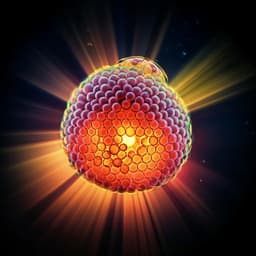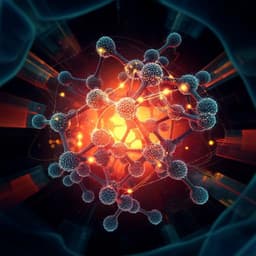Introduction
Fluorescence microscopy is a powerful tool for observing cellular and sub-cellular dynamics in 3D with high specificity and sensitivity. Traditional volumetric data acquisition methods, involving sequential 2D image recording while stepping the focal plane, are too slow for rapid dynamics and prevent simultaneous whole-volume observation. Projection techniques offer an alternative by rapidly forming a 2D projection of a 3D volume, increasing volumetric interrogation rates and enabling simultaneity. These techniques typically extend the depth of focus, either through PSF engineering (with limitations like fixed depth of focus in phase mask methods) or dynamic focal plane sweeping (which can introduce aberrations in singlet lenses, requiring complex remote focusing techniques that cause fluorescence loss and fail to suppress background fluorescence). Multi-photon excitation methods can suppress background, but have limitations of high laser power needs, expensive light sources, and limited fluorophore choices. A previously introduced multi-angle projection technique improved contrast in light-sheet microscopy but still suffered from background haze in dense samples. This paper introduces a novel projection imaging method, 'projections with parameter selection' (props), which addresses these limitations by enabling on-the-fly adjustment of depth of focus and axial position, while robustly rejecting background fluorescence. The method allows selective projection of a variable depth and location sub-volume, leading to sharper images by suppressing fluorescence from outside the selected region. Combined with oblique plane microscopy (OPM), rapid acquisition of projections at different z-positions is possible without sample or objective movement. The applicability of props across scales, from subcellular to mesoscopic imaging, is demonstrated through various biological examples.
Literature Review
The authors review existing projection imaging techniques, highlighting their strengths and weaknesses. Phase mask-based PSF engineering provides extended depth of focus but lacks flexibility. Dynamic focal plane sweeping using electro-tunable lenses or TAG lenses introduces aberrations, necessitating complex and lossy aberration correction methods. Multi-photon excitation, while effective in background suppression, is costly and has limited fluorophore compatibility. Previous work by the authors on multi-angle projection imaging improved contrast in light-sheet microscopy, but scattering limited its application to transparent samples. This literature review sets the stage for the introduction of props as a novel solution to overcome the limitations of existing techniques.
Methodology
The principle of props builds upon a previously introduced rapid projection imaging method, compatible with LLSM or OPM. A tilted light-sheet scans the sample volume, and the focal plane is swept during a single camera exposure to form a projection. The viewing angle is adjusted by scanning the fluorescence image across the camera chip, leveraging the shear warp transform. Crucially, a rolling shutter readout is employed to create projections from a selected sub-volume. The rolling shutter width determines the projection depth, while a time delay between the shutter and focal sweep controls the axial position. Nonlinear scanning waveforms allow adaptive projection imaging to match sample geometry. The method's versatility is demonstrated on both LLSMprops (lattice light-sheet microscopy with props) and meso OPMprops (mesoscopic oblique plane microscopy with props). OPMprops is also applied with structured illumination (OPSIMprops) for super-resolution imaging. The specifics of oblique plane microscopy, oblique plane structured illumination microscopy, Drosophila stock maintenance, preparation of fly embryos for imaging (actin and calcium sensors), mounting of zebrafish embryos, fly genetics and molecular biology, zebrafish husbandry, lattice light sheet microscopy, and spinning disk confocal microscopy are described in detail in the methods section. Statistical analysis, reproducibility, data availability, and code availability are also discussed.
Key Findings
Props allows adjustable projection depth, demonstrated by imaging A375 cells with LLSMprops and zebrafish vasculature with meso OPMprops, achieving depth coverage exceeding conventional methods by two orders of magnitude. The ability to vary projection depth suppresses image blur in scattering samples, as shown by imaging a Drosophila embryo. Props enables projection imaging with an axial offset, demonstrated by sequentially acquiring projections of sub-volumes in zebrafish and U-2 OS cells, showcasing the ability to select and vary imaging regions without mechanical movement. Nonlinear waveforms enable projections along curved surfaces, demonstrated by optically unwrapping a Drosophila embryo. Fast functional imaging is achieved with OPMprops by imaging calcium dynamics in Drosophila embryos and zebrafish brains at high frame rates, demonstrating superior clarity compared to conventional projection imaging. The rapid switching between different brain layers in zebrafish highlights the technique’s speed advantage for near-simultaneous observation. The combination of props with structured illumination (OPSIMprops) opens possibilities for live cell super-resolution imaging of selected cellular layers. The paper highlights the superior speed of props compared to computational deskewing and rendering methods, as props only acquires a single 2D image per time point, resulting in significant data size reduction as demonstrated by a time-lapse imaging of Drosophila embryo ventral furrow formation.
Discussion
The study successfully introduces and validates props as a powerful new technique for fluorescence microscopy. The ability to select specific sub-volumes, reject background fluorescence, and rapidly switch between different regions opens up numerous applications. The high imaging speed, reduced data size, and compatibility with existing light-sheet microscopes make props a significant advancement. The demonstration of its use across different organisms and for various biological processes showcases its versatility. The capacity for super-resolution imaging and fast functional imaging expands its potential applications even further. The ability to optically unwrap curved surfaces offers a unique advantage for imaging complex geometries.
Conclusion
The paper concludes that the introduction of projection imaging with parameter selection (props) significantly advances light-sheet microscopy. Props enables rapid volumetric imaging with adjustable depth and axial position, allowing selective imaging of sub-volumes, background fluorescence rejection, and rapid switching between regions. The method's speed, data size reduction, and versatility, demonstrated through various biological examples, establish props as a promising technique for diverse applications in biological imaging. Future research could explore the integration of props with additional microscopy techniques and further optimization for specific applications.
Limitations
While props offers numerous advantages, the authors acknowledge that the maximum projection depth is limited by the light-sheet characteristics and sample transparency. Acquiring 3D stacks using sequential, narrow rolling shutter acquisitions trades off the parallelized nature of light-sheet microscopy. The study primarily focuses on specific model organisms and applications. Further investigation is needed to assess its effectiveness across a broader range of biological systems and imaging challenges. The method relies on the rolling shutter functionality of scientific CMOS cameras, which may not be universally available.
Related Publications
Explore these studies to deepen your understanding of the subject.







